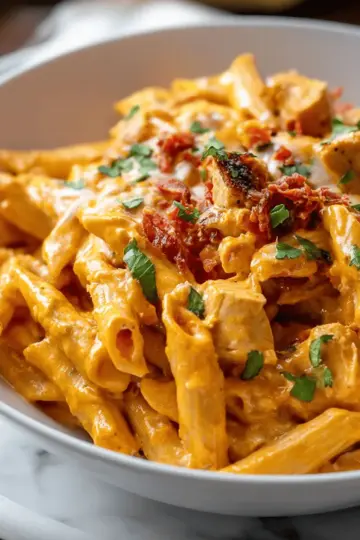Introduction to Artisan Pizza Dough
Homemade pizza night is more than just a meal; it’s an experience. Have you ever had store-bought pizza that feels more like cardboard than a culinary delight? Making your own artisan pizza dough transforms pizza from ordinary to extraordinary. But why go through the effort of creating dough from scratch?
Why Make Your Own Artisan Pizza Dough?
-
Freshness: Nothing beats the smell of freshly made dough rising in your kitchen. When you craft your own dough, you are in control of the ingredients, ensuring a fresher, more flavorful crust.
-
Customizability: Store-bought options can lack versatility, but making your own allows you to experiment with different flours, hydration levels, and fermentation times. You can adjust to achieve that perfect crispy, chewy, bubbly crust you've been dreaming of!
-
Healthier Ingredients: You can bypass preservatives and additives found in many commercial products by choosing high-quality ingredients, making your pizza not just delicious but also healthier.
Plus, a study from the Institute of Food Technologists emphasizes how homemade pizza can have fewer calories and saturated fats than restaurant or frozen options.
Are you ready to roll up your sleeves and embark on this delicious culinary adventure? Your friends and family will thank you for it when they sink their teeth into your homemade pizzas!

Ingredients for Artisan Pizza Dough
Creating the perfect artisan pizza dough starts with quality ingredients that lay the foundation for a crispy, chewy, and bubbly crust. Here’s what you’ll need:
Essential Ingredients for a Perfect Crust
-
All-Purpose Flour: 500g (3 ¾ cups plus 2 tbsp) of all-purpose flour gives your dough the right balance of strength and stretch. Opt for a high-protein variety for that perfect chew.
-
Warm Water: 375g (1 ½ cups plus 2 tbsp) of warm water activates the yeast and hydrates the flour. This is essential for gluten formation and creates that airy texture we’re striving for.
-
Active Dry Yeast: At just 1g (¼ tsp), this tiny amount is powerful! It’s what gives the dough its rise, creating those delightful bubbles in your crust.
-
Fine Salt: 10g (1 ½ tsp) of fine salt not only adds flavor but also strengthens the gluten network, resulting in a better texture.
By choosing high-quality ingredients, you're setting the stage for a fantastic pizza experience. For more tips on ingredient selection, check out resources like the King Arthur Baking Company.
Preparing Artisan Pizza Dough
Creating the perfect artisan pizza dough is both an art and a science. Follow these straightforward steps to ensure you achieve that crispy, chewy, bubbly crust that makes homemade pizza so delightfully satisfying.
Mixing and resting the dough
Begin by combining 500g of all-purpose flour with 375g of warm water, holding back just a tablespoon of water. Mix until the flour is just combined, then cover the bowl with a clean cloth and let it rest for 20 minutes. This beginner step allows the flour to hydrate, which is essential for good gluten development later on. While the dough rests, take the remaining warm water, sprinkle 1g of active dry yeast over it, and let it dissolve. You can read more about the science behind this autolyse method on sources like Serious Eats.
Folding and developing gluten
After resting, it’s time to bring some life into the dough! Sprinkle 10g of fine salt over the surface. Stir the yeast mixture and pour it over the dough, then, using a lightly wet hand, stretch a section of the dough and fold it over itself. Repeat this process until you’ve worked around the bowl, making sure the salt and yeast are well incorporated. After folding, cover the bowl again and let it rest for about an hour. This resting phase is critical as it allows gluten to develop, which is key for that perfect artisan pizza dough texture.
Shaping the dough into balls
Now that your dough has risen nicely, it's time to shape it. Turn it out onto a floured surface and, using a sharp knife, cut it in half. Take one piece and stretch it out gently, folding the edges back toward the center to form a ball. Make sure the seam is on the bottom. If you want your dough to have a nice tight surface, cup your hands around it and gently pull it towards you on the countertop while rotating. This is where you get that essential tension that leads to a perfectly shaped dough.
Final resting and preheating
Once you've shaped your dough balls, transfer them to a greased plate, lightly oil the tops, and cover them. Let them rest at room temperature for about an hour. During this time, preheat your oven to its maximum temperature (around 500°F works great). This step ensures that your artisan pizza dough meets the intense heat needed for that desirable crispy exterior and chewy interior.
Now you’re ready to turn these beautifully risen balls of dough into the pizza of your dreams! Don’t rush; remember, good things come to those who wait. Enjoy the process and have fun experimenting with your favorite toppings!

Variations on Artisan Pizza Dough
Creating your own artisan pizza dough can be a delightful culinary adventure, but who says you have to stick to the classic recipe? Here are some easy variations to suit your dietary preferences while keeping that crispy, chewy, bubbly crust we all love!
Whole Wheat Artisan Pizza Dough
Substituting all-purpose flour for whole wheat flour adds a nutty flavor and extra nutrients. Just remember to increase the water slightly—whole wheat flour tends to absorb more moisture. Aim for about 10% more water for the perfect texture. This version is an excellent way to boost fiber in your meal, making your pizza not just delicious, but healthier too. For tips on working with whole wheat flour, check out this article from King Arthur Baking.
Gluten-Free Artisan Pizza Dough
For those avoiding gluten, creating a delicious gluten-free artisan pizza dough is simpler than you might think! Use a gluten-free flour blend that includes xanthan gum or add your own to help mimic the elasticity of traditional dough. A mixture of almond flour and tapioca flour can yield fantastic results, giving you that sought-after crisp crust without sacrificing flavor. You can find some great blends or recipes at Bob's Red Mill. Enjoy experimenting, and don’t hesitate to switch up toppings for a personalized touch!
Cooking Tips and Notes for Artisan Pizza Dough
Importance of Oven Temperature
Achieving a perfectly crispy, chewy crust with your artisan pizza dough hinges on your oven's temperature. Preheat your oven between 475°F to 500°F (or its maximum setting) for at least 45 minutes. A hotter oven creates steam, which helps develop that bubbly texture we all love. This high heat cooks the dough quickly, giving it a different texture than a lower temperature would, ensuring your crust is both crisp and airy.
Using a Pizza Stone or Steel
Utilizing a pizza stone or steel is key in replicating the authentic Italian pizzeria experience at home. These tools retain heat better than a standard baking sheet, ensuring an evenly cooked crust. Place the stone or steel in the oven while it preheats to create a hot surface for your artisan pizza dough to bake on. If you don’t have one, an inverted baking sheet can work in a pinch!
For additional tips, check out Serious Eats for expert advice on pizza techniques.


artisan pizza dough- crispy, chewy, bubbly crust
Equipment
- large bowl
- Pizza Peel
- baking steel or stone
- Cast iron pan
Ingredients
- 500 g all-purpose flour
- 375 g warm water divided
- 1 g active dry yeast
- 10 g fine salt
Instructions
- Mix flour and all but 1 tablespoon of the water in a large bowl until just combined, then cover and set aside for 20 minutes to rest. Sprinkle yeast over remaining warm water and set aside to dissolve.
- Sprinkle salt over the surface of the dough. Stir yeast mixture and pour over dough. Fold the dough until mixed and a shaggy dough is formed. Cover the bowl and let rest about an hour.
- Fold the dough one time to develop the gluten: stretch up a section of dough, then fold it over the center. Rotate and fold until a ball is formed. Invert into a greased bowl, cover, and let rise until doubled in volume, 5-6 hours.
- Turn the dough out onto a floured surface and cut in half. Shape into a ball, create tension, and rest at room temperature for about an hour. Preheat oven.
- Preheat oven to 500°F (or as high as it will go) for at least 45 minutes. Prepare pizza peel or greased cast iron pan.
- Flatten one dough ball into a disk with a thick edge, shaping it into a circle. Lay on prepared pizza peel and adjust shape as needed.
- Add sauce and toppings to pizza dough, leaving the 1-inch perimeter empty. Bake on steel for 5 minutes, then broil for 2-4 minutes. If using cast iron, bake for 15-20 minutes.





Leave a Reply